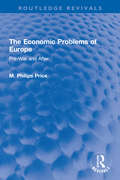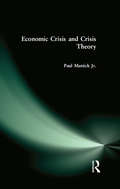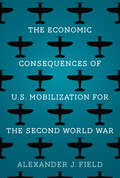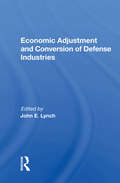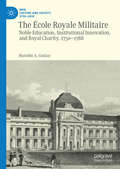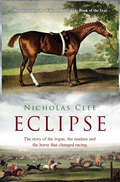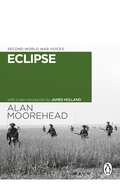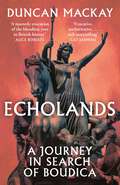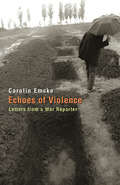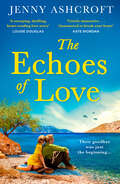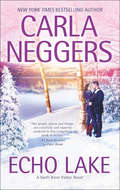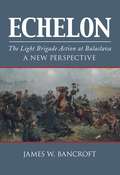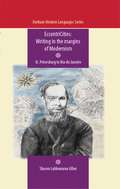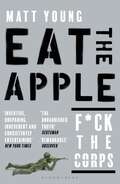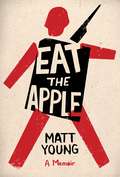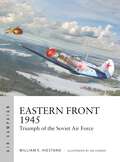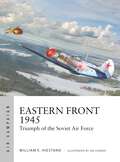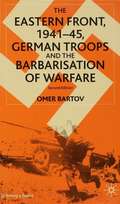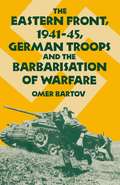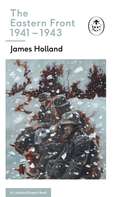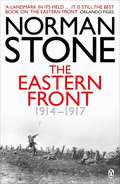- Table View
- List View
The Economic Problems of Europe: Pre-War and After (Routledge Revivals)
by M. Philips PriceFirst Published in 1928 The Economic Problems of Europe presents a comprehensive overview of the economic and political transformation of Europe since the First World War. European and world problems often tend to be looked upon from the political, diplomatic, naval, or military aspect. Morgan Philips Price attempted to add the economic background and to show the connection between the political rearrangements since the First World War and the material needs of society, markets of the industrialist, the wages of the workman, and the loans of the bankers. He argued that with the growing internationalization of the world economy, the old map of the world is obsolete and the new one, if it is based on frontiers of finance and industry, will be something very different. This book is an essential read for scholars and researchers of economic history, war history, political economy, British economic history and European history.
The Economic Problems of Europe: Pre-War and After (Routledge Revivals)
by M. Philips PriceFirst Published in 1928 The Economic Problems of Europe presents a comprehensive overview of the economic and political transformation of Europe since the First World War. European and world problems often tend to be looked upon from the political, diplomatic, naval, or military aspect. Morgan Philips Price attempted to add the economic background and to show the connection between the political rearrangements since the First World War and the material needs of society, markets of the industrialist, the wages of the workman, and the loans of the bankers. He argued that with the growing internationalization of the world economy, the old map of the world is obsolete and the new one, if it is based on frontiers of finance and industry, will be something very different. This book is an essential read for scholars and researchers of economic history, war history, political economy, British economic history and European history.
Economic Crisis and Crisis Theory
by Paul Mattick Jr.Keynesian economics claimed to have overcome the problem of economic depressions. However, as Mattick argues that crises are inherent within capitalism and that neither the market nor Keynesianism can stop "the steady deterioration of the economy". Written in 1974, Economic Crisis and Crisis Theory is one of Mattick's most valuable contributions to the Marxist critique of political economy and radical theory in general.
Economic Crisis and Crisis Theory
by Paul Mattick Jr.Keynesian economics claimed to have overcome the problem of economic depressions. However, as Mattick argues that crises are inherent within capitalism and that neither the market nor Keynesianism can stop "the steady deterioration of the economy". Written in 1974, Economic Crisis and Crisis Theory is one of Mattick's most valuable contributions to the Marxist critique of political economy and radical theory in general.
The Economic Consequences of U.S. Mobilization for the Second World War
by Alexander J. FieldA reminder that war is not always, or even generally, good for long-term growth Many believe that despite its destructive character, war ultimately boosts long‑term economic growth. For the United States this view is often supported by appeal to the experience of the Second World War, understood as a triumph of both production and productivity. Alexander Field shows that between 1941 and 1945 manufacturing productivity actually declined, depressed by changes in the output mix and resource shocks from enemy action, including curtailed access to natural rubber and, on the Eastern Seaboard, petroleum. The war forced a shift away from producing goods in which the country had a great deal of experience toward those in which it had little. Learning by doing was only a partial counterbalance to the intermittent idleness and input hoarding that characterized a shortage economy and dragged down productivity. The conflict distorted human and physical capital accumulation and once it ended, America stopped producing most of the new goods. The war temporarily shut down basic scientific research and the ongoing development of civilian goods. U.S. world economic dominance in 1948, Field shows, was due less to the experience of making war goods and more to the country’s productive potential in 1941.  
Economic Adjustment And Conversion Of Defense Industries
by John E. LynchDefense plant cutbacks and military base closures have affected hundreds of U.S. communities during the past twenty-five years. Tracing the recovery of four communities after large defense plant cutbacks and of one hundred communities after military base closures, the contributors analyze the transition from the production of military to civilian goods. The contributors examine the market potential of reusing defense industrial plants to produce civilian products within the one- to two-year period called for by economic conversion proponents, showing that the complex process needed to develop, test, and market an entirely new product requires a minimum of five years. They also review the wide range of economic development techniques available at the state and local level, conversion approaches in Western Europe, programs for displaced workers, and reasons why the economic conversion approach has failed to attract public support in the United States. The case studies are used to formulate an integrated, composite approach for coping with plant closures and major employment dislocations. Stressing the in portance of community-based economic adjustment activities, this book will be valuable to all concerned with mitigating the effects of military and civilian plant closures.
Economic Adjustment And Conversion Of Defense Industries
by John E. LynchDefense plant cutbacks and military base closures have affected hundreds of U.S. communities during the past twenty-five years. Tracing the recovery of four communities after large defense plant cutbacks and of one hundred communities after military base closures, the contributors analyze the transition from the production of military to civilian goods. The contributors examine the market potential of reusing defense industrial plants to produce civilian products within the one- to two-year period called for by economic conversion proponents, showing that the complex process needed to develop, test, and market an entirely new product requires a minimum of five years. They also review the wide range of economic development techniques available at the state and local level, conversion approaches in Western Europe, programs for displaced workers, and reasons why the economic conversion approach has failed to attract public support in the United States. The case studies are used to formulate an integrated, composite approach for coping with plant closures and major employment dislocations. Stressing the in portance of community-based economic adjustment activities, this book will be valuable to all concerned with mitigating the effects of military and civilian plant closures.
The École Royale Militaire: Noble Education, Institutional Innovation, and Royal Charity, 1750-1788 (War, Culture and Society, 1750 –1850)
by Haroldo A. GuízarThis book explores the Paris Ecole Militaire as an institution, arguing for its importance as a school that presented itself as a model for reform during a key moment in the movement towards military professionalism as well as state-run secular education. The school is distinguished for being an Enlightenment project, one of its founders publishing an article on it in the Encyclopédie in 1755. Its curriculum broke completely with the Latin pedagogy of the dominant Jesuit system, while adapting the legacy of seventeenth-century riding academies. Its status touches on the nature of absolutism, as it was conceived to glorify the Bourbon dynasty in a similar way to the girls’ school at Saint Cyr and the Invalides. It was also a dispensary of royal charity calculated to ally the nobility more closely to royal interests through military service. In the army, its proofs of nobility were the model for the much debated 1781 Ségur decree, often described as a notable cause of the French Revolution.
Eclipse: The Story Of The Rogue, The Madam And The Horse That Changed Racing
by Nicholas CleeEpsom Downs, 3rd May, 1769: a chestnut with a white blaze scorches across the turf towards the finishing post. His four rivals are so far behind him that, in racing terms, they are 'nowhere'. Watching Eclipse is the man who wants to buy him. An adventurer who has made his money through roguery and gambling, Dennis O'Kelly is also the companion of the madam of one of London's most notorious brothels. While O'Kelly is destined to remain an outcast to the racing establishment, his horse will go on to become the undisputed, undefeated champion of his sport. Eclipse's male-line descendants will include Desert Orchid, Arkel and all but three of the Derby winners of the past fifty years. And his astonishing life will be matched only by that of the rogue who owned him.
Eclipse (Second World War Voices)
by Alan MooreheadPart of the SECOND WORLD WAR VOICES series in partnership with the podcast We Have Ways of Making You Talk, presented by comedian Al Murray and bestselling historian James Holland.With a new introduction by James HollandEclipse was the code name given by the Allies to the occupation of Germany. Moorehead's book describes his experiences in Sicily and southern Italy in 1943, which culminated in the capture of Rome. He tells the electrifying story of D-Day, the liberation of Paris, and the Allied advance through northern France and Belgium, the crossing of the Rhine.The author reconstructs, in terrifying detail, the collapse of Germany, the wholesale destruction, mass surrenders, and the unimaginable horrors of the concentration camps.
Echolands: A Journey in Search of Boudica
by Duncan MackayAlmost 2000 years ago, Boudica led the greatest rebellion Britain has ever seen. Within the space of a single blood-soaked year, she united the tribes to deliver blow after devastating blow to the Roman regime, culminating in a brutal, decisive battle.Archaeologist Duncan Mackay has spent a lifetime on the trail of Boudica. Beginning near his home in Norfolk, in the heart of Boudica's tribal territory, he embarks on a journey in the footsteps of Romans and Britons, exploring their villages, towns, forts and roads. The passage of two millennia has buried the world that Boudica knew, but Duncan finds that its echoes and physical traces still surround us - as long as you know where to look. The armies marched along the roads we still use, and died in their thousands in towns, cities and countryside where we still live today. The site of Boudica's last battle was long believed be lost to time, but the threads of the story all pull towards one remarkable, forgotten little corner of the English landscape.From the Breckland of Norfolk to the back streets of Colchester, from the remotest corner of Anglesey to the depths of the London Underground, Duncan takes us back two thousand years to retell the story of Britain's bloodiest year. Fusing ancient history, modern excavation, landscape exploration, and vivid reconstruction, Echolands weaves the long-lost tapestry of Boudica's war.
Echoes of Violence: Letters from a War Reporter (PDF) (Human Rights and Crimes against Humanity #1)
by Carolin Emcke"Nobody I ever met on my assignments . . . asked me for direct, practical help. . . . But over and over again people have asked me: 'Will you write this down?' "--Echoes of Violence ? Echoes of Violence is an award-winning collection of personal letters to friends from a foreign correspondent who is trying to understand what she witnessed during the iconic human disasters of our time--in Iraq, Lebanon, Afghanistan, and New York City on September 11th, among many other places. Originally addressing only a small group of friends, Carolin Emcke started the first letter after returning from Kosovo, where she saw the aftermath of ethnic cleansing in 1999. She began writing to overcome her speechlessness about the horrors of war and her own sense of failure as a reporter. Eventually, writing a letter became a ritual Emcke performed following her return from each nightmare she experienced. First published in 2004 to great acclaim, Echoes of Violence in 2005 was named German political book of the year and was a finalist for the international Lettre-Ulysses award for the art of reportage. Combining narrative with philosophic reflection, Emcke describes wars and human rights abuses around the world--the suffering of civilians caught between warring factions in Colombia, the heartbreaking plight of homeless orphans in Romania, and the near-slavery of garment workers in Nicaragua. Freed in the letters from journalistic conventions that would obscure her presence as a witness, Emcke probes the abyss of violence and explores the scars it leaves on landscapes external and internal.
The Echoes of Love
by Jenny Ashcroft‘A big, beautiful, epic tale of war, heartache, betrayal, courage and most of all, love. I can’t remember the last time I was so transported by a book . . . I can’t recommend The Echoes of Love more highly. This story is a classic of our time’ Louise Douglas, The Room in the Attic
Echo Lake (Mira Ser. #4)
by Carla NeggersIn snowy Swift River Valley, unexpected romance is just around the corner… Heather Sloan has landed her dream job–the renovation of Vic Scarlatti's stately 1912 country home overlooking the icy waters of Echo Lake in Knights Bridge, Massachusetts. It's the perfect project for the family business, but for once, Heather is in charge.
Echelon: The Light Brigade Action at Balaclava - A New Perspective
by James BancroftLord Cardigan's cavalry charge on 25 October 1854 at the battle of Balaclava 'into the valley of death' is surely one of the most famous actions in military history. Is there anything new to say about it in print? Yes there is, because most publications have concentrated on commanding officers Lucan, Cardigan and the fatal actions of Nolan. But there were 670 men in the charge and by collating the evidence from the many eyewitnesses James Bancroft offers a new and more accurate appraisal of events. Cardigan's description of the action was quoted at length in the House of Commons: '...with the batteries vomiting forth upon us shells and shot, round and grape, with one battery on our right flank and another on the left... when we came to within a distance of fifty yards from the mouths of the artillery which had been hurling destruction upon us, we were, in fact, surrounded and encircled by a blaze of fire.' One question of course - which the author, who has been studying the subject for many years, addresses - is how anyone survived.
EccentriCities: St. Petersburg to Rio de Janeiro (PDF) (Durham Modern Languages Series)
by Sharon Lubkemann AllenAn innovative, interdisciplinary, incisive scholarly study remapping and redefining domains and dynamics of modernism, EccentriCities: Writing in the margins of modernism critically considers how geo-historically distant and disparate urban sites, concentrating Russian and Luso-Brazilian cultural dialogue and definition, give rise to peculiarly parallel anachronistic and alternative fictional forms. While comparatively reframing these literary traditions through an extensive survey of Russian and Brazilian literature, cartography, urban design and development, foregrounding innovative close readings of works by Gogol, Dostoevsky, Bely, Almeida, Machado de Assis, Lima Barreto, Mário de Andrade, the book also redefines new constellations (eccentric, concentric, ex-centric) for understanding geo-cultural and generic dimensions of modernist and post-modern literature and theory.
EccentriCities: St. Petersburg to Rio de Janeiro (Durham Modern Languages Series)
by Sharon Lubkemann AllenAn innovative, interdisciplinary, incisive scholarly study remapping and redefining domains and dynamics of modernism, EccentriCities: Writing in the margins of modernism critically considers how geo-historically distant and disparate urban sites, concentrating Russian and Luso-Brazilian cultural dialogue and definition, give rise to peculiarly parallel anachronistic and alternative fictional forms. While comparatively reframing these literary traditions through an extensive survey of Russian and Brazilian literature, cartography, urban design and development, foregrounding innovative close readings of works by Gogol, Dostoevsky, Bely, Almeida, Machado de Assis, Lima Barreto, Mário de Andrade, the book also redefines new constellations (eccentric, concentric, ex-centric) for understanding geo-cultural and generic dimensions of modernist and post-modern literature and theory.
Eat the Apple: A Memoir
by Matt YoungA gut-wrenching, beautiful memoir which explores toxic masculinity and the devastating consequences of war on one impressionable young soldierMatt Young joined the Marine Corps aged eighteen, after a drunken night that culminated in him crashing his car into a fire hydrant. The teenage wasteland he fled followed him to the training bases of California. Young survived training and then three deployments to Iraq as an infantryman.Eat the Apple is the searing and honest response to those years. Visceral, ironic, self-lacerating and ultimately redemptive, Young's story drops us unarmed into Marine Corps culture and lays bare the vulnerability of those on the front lines and the true, if often misguided, motivations that drove a young man to a life at war. Tender and brilliantly written, Eat the Apple is a powerful coming-of-age story that explores toxic masculinity and maps the insane geography of our times.
Eat the Apple: A Memoir
by Matt Young"The Iliad of the Iraq war" (Tim Weiner)--a gut-wrenching, beautiful memoir of the consequences of war on the psyche of a young man. Eat the Apple is a daring, twisted, and darkly hilarious story of American youth and masculinity in an age of continuous war. Matt Young joined the Marine Corps at age eighteen after a drunken night culminating in wrapping his car around a fire hydrant. The teenage wasteland he fled followed him to the training bases charged with making him a Marine. Matt survived the training and then not one, not two, but three deployments to Iraq, where the testosterone, danger, and stakes for him and his fellow grunts were dialed up a dozen decibels. With its kaleidoscopic array of literary forms, from interior dialogues to infographics to prose passages that read like poetry, Young's narrative powerfully mirrors the multifaceted nature of his experience. Visceral, ironic, self-lacerating, and ultimately redemptive, Young's story drops us unarmed into Marine Corps culture and lays bare the absurdism of 21st-century war, the manned-up vulnerability of those on the front lines, and the true, if often misguided, motivations that drove a young man to a life at war. Searing in its honesty, tender in its vulnerability, and brilliantly written, Eat the Apple is a modern war classic in the making and a powerful coming-of-age story that maps the insane geography of our times.
Eastern Front 1945: Triumph of the Soviet Air Force (Air Campaign #42)
by William E. HiestandA detailed, illustrated account of the air campaign that accompanied the Red Army's final push towards Berlin, in which massed Soviet air power defeated the Luftwaffe's high-tech Me 262 jets and Mistel exploding drones. The last months of World War II on the Eastern Front saw a ferocious fight between two very different air forces. Soviet Air Force (VVS) Commander-in-Chief Alexander Novikov assembled 7,500 aircraft in three powerful air armies to support the final assault on Berlin. The Luftwaffe employed some of its most advanced weapons including the Me 262 jet and Mistel remotely-guided bomb aircraft. Using photos, 3D diagrams, maps and battlescene artwork, William E. Hiestand, a military analyst with a longstanding interest in Soviet military history, explains how Germany's use of high-tech weaponry and massed Soviet air assaults was not just the culmination of World War II air combat, but also pointed to how the future rivalry with NATO would play out. The VVS used powerful and flexible air armies to control and employ its huge force of aircraft – organizational and employment concepts that would shape Soviet plans and preparations for combat during the Cold War. For the first time, this volume explains how air power helped win the war on the Eastern Front, and how victory shaped Soviet air power doctrine for the decades to come.
Eastern Front 1945: Triumph of the Soviet Air Force (Air Campaign #42)
by William E. HiestandA detailed, illustrated account of the air campaign that accompanied the Red Army's final push towards Berlin, in which massed Soviet air power defeated the Luftwaffe's high-tech Me 262 jets and Mistel exploding drones. The last months of World War II on the Eastern Front saw a ferocious fight between two very different air forces. Soviet Air Force (VVS) Commander-in-Chief Alexander Novikov assembled 7,500 aircraft in three powerful air armies to support the final assault on Berlin. The Luftwaffe employed some of its most advanced weapons including the Me 262 jet and Mistel remotely-guided bomb aircraft. Using photos, 3D diagrams, maps and battlescene artwork, William E. Hiestand, a military analyst with a longstanding interest in Soviet military history, explains how Germany's use of high-tech weaponry and massed Soviet air assaults was not just the culmination of World War II air combat, but also pointed to how the future rivalry with NATO would play out. The VVS used powerful and flexible air armies to control and employ its huge force of aircraft – organizational and employment concepts that would shape Soviet plans and preparations for combat during the Cold War. For the first time, this volume explains how air power helped win the war on the Eastern Front, and how victory shaped Soviet air power doctrine for the decades to come.
The Eastern Front, 1941–45, German Troops and the Barbarisation of Warfare (St Antony's Series)
by O. BartovBased largely upon unpublished sources, Omer Bartov's study looks closely at the background of the German army on the Eastern Front during the Second World War. He describes the physical hardship, the discipline and morale at the front, and analyses the social, educational and political background of the junior officers who formed the backbone of the German army. Only with these factors in mind - together with the knowledge of the extent of National Socialist indoctrination - can we begin to explain the criminal activities of the German army in Russia and the extent of involvement of the army in the execution of Hitler's brutal policies.
The Eastern Front, 1941-45, German Troops and the Barbarisation ofWarfare (St Antony's Series)
by Omer BartovBased largely upon unpublished sources, Omer Bartov's study looks closely at the background of the German army on the Eastern Front during the Second World War. He describes the physical hardship, the discipline and morale at the front, and analyses the social, educational and political background of the junior officers who formed the backbone of the German army. Only with these factors in mind - together with the knowledge of the extent of National Socialist indoctrination - can we begin to explain the criminal activities of the German army in Russia and the extent of involvement of the army in the execution of Hitler's brutal policies.
The Eastern Front 1941-43: Book 5 of the Ladybird Expert History of the Second World War (The Ladybird Expert Series)
by James Holland Keith BurnsPart of the Ladybird Expert History of the Second World War series, The Eastern Front 1941-1944, is an authoritative and accessible introduction to the brutal confrontation between Nazi Germany and the Soviet Union along a 1,200 mile front. Historian, author and broadcaster James Holland draws on the latest research and interviews with participants to bring colour, detail and a fresh perspective to the story of a front defined by unprecedented destruction. Inside, you'll discover how tactics, organisation and new technologies were brought to bear, about the different challenges faced by both the Axis and the Allies, and, above all, the skill, bravery and endurance of those engaged in a contest that was of critical importance to the outcome of the war.
The Eastern Front 1914-1917
by Norman Stone'Without question one of the classics of post-war historical scholarship, Stone's boldly conceived and brilliantly executed book opened the eyes of a generation of young British historians raised on tales of the Western trenches to the crucial importance of the Eastern Front in the First World War' Niall Ferguson 'Scholarly, lucid, entertaining, based on a thorough knowledge of Austrian and Russian sources, it sharply revises traditional assumptions about the First World War.' Michael Howard
